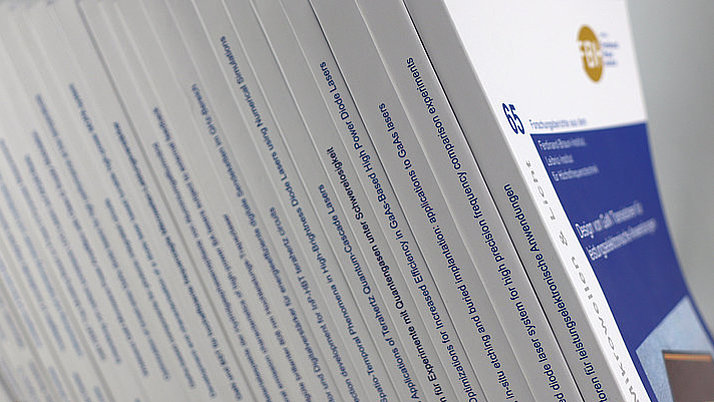Spatially resolved degradation effects in UVB LEDs stressed by constant current operation
J. Ruschel1, J.W. Tomm2, J. Glaab1, T. Kolbe1, A. Knauer1, J. Rass1, N. Lobo-Ploch1, T.A. Musengezi1, and S. Einfeldt1
Published in:
Appl. Phys. Lett., vol. 122, no. 13, pp. 131103, doi:10.1063/5.0141530 (2023).
Abstract:
InAlGaN-based UVB light-emitting diodes with an emission wavelength of 310 nm were operated at an elevated nominal current density of 200 A/cm2 and a heatsink temperature of 29°C. The spatial intensity distributions of the electroluminescence and photoluminescence were measured before, during, and after dc stress. A decreasing homogeneity of the spatial intensity distributions with operation time was observed. It is concluded that the current density distribution changes during operation. Furthermore, the active region degrades more rapidly in the areas of higher current density. By quantitatively evaluating the current density distribution, it is proposed that a decreasing radiative recombination efficiency of the active region is causing the decrease in the total optical power of the LEDs during operation.
1 Ferdinand-Braun-Institut (FBH), Gustav-Kirchhoff-Str. 4, 12489 Berlin, Germany
2 Max-Born-Institut für Nichtlineare Optik und Kurzzeitspektroskopie (MBI), Max-Born-Str. 2A, 12489 Berlin, Germany
Topics:
UV/DUV Light Emitters, Photoluminescence, Electroluminescence, Crystallographic defects, Materials degradation, Light emitting diodes, Optical properties
© 2023 Author(s). All article content, except where otherwise noted, is licensed under a Creative Commons Attribution (CC BY) license (http://creativecommons.org/licenses/by/4.0/). https://doi.org/10.1063/5.0141530
Full version in pdf-format.


